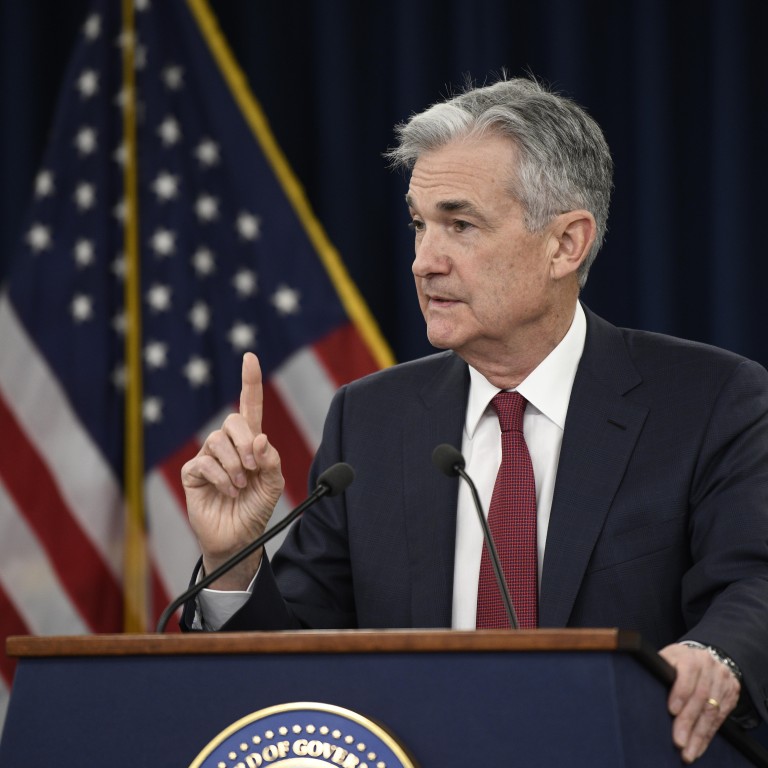After a horrendous year in financial
markets, with nearly every major asset class delivering losses, investors deserved a Santa Claus rally.
While there are still several more trading sessions left this year, the Christmas feel-good factor is conspicuously absent in equity markets. According to data from Bloomberg, the benchmark
S&P 500 index is on course for its second-worst December on record and remains firmly in correction territory, typically defined as a drop of 10 per cent or more from a recent high. Other major equity indices, notably in
Japan, continue to suffer sharp declines. In the past three months, the MSCI World Index, a leading gauge of
stocks in developed economies, has fallen more than 13 per cent.
On a global level, a staggering US$15 trillion has been wiped off the value of equity markets since late January, according to Bloomberg, with
China accounting for 13 per cent of the losses. More ominously, the world’s banking stocks slipped into bear market territory – a drop of 20 per cent or more from a recent peak – in the second-half of this year in a sign of the severity of the deterioration in sentiment.
The latest fund manager survey published by
Bank of America Merrill Lynch on Tuesday revealed that investors’ allocation to global equities has fallen to a two-year low, triggering the largest-ever one-month rotation into bonds as inflationary pressures subside. The catalyst for the dramatic shift out of stocks is mounting concerns about growth. According to the survey, investors are the most bearish on the outlook for the
world economy since the
2008 financial crisis.
The reasons for pessimism are well known: the withdrawal of monetary stimulus led by the
Federal Reserve; the simmering
US-China trade war; and signs of a regime change in markets as a long period of calm gives way to a surge in volatility. Worries about corporate earnings – particularly in the
United States, where profit growth is set to slow sharply next year after reaching 20 per cent this year – and a fierce sell-off in once high-flying
technology stocks are adding to the gloom.
Yet the level of bearishness in stock markets right now is excessive and risks becoming a self-fulfilling prophecy if the selling pressure persists.
As
JPMorgan notes in a report published last Friday, this year’s peak-to-trough decline in the S&P 500 indicates a 30 per cent probability of a US recession within the next three to six months, with some sectors in the index assigning a more than 50 per cent probability to a contraction in economic output within this period. Given that the latest forecast from the
International Monetary Fund shows the US economy expanding 2.5 per cent next year, the time frame for a recession that the stock market is currently pricing in is far too bleak.
America’s equity market, which was quite resilient up until early October, is paying the price for mounting concerns about much sharper slowdowns in other major economies, in particular China and the euro zone. From the standpoint of economic fundamentals, there is no reason why the S&P 500 should be down as much as 9.2 per cent this month, compared with a decline of just 3.7 per cent for the MSCI All-Country World Index ex US, a gauge of global stocks excluding American shares.
Still, the excessive pessimism in US equity markets ought to provide a fillip to other regions where valuations are cheaper. The appeal of emerging market stocks has risen since September, when the
currencies of developing economies stabilised following a brutal sell-off. With the forward price-to-earnings ratio (a popular valuation measure) of the MSCI Emerging Market equity index currently standing at just under 11, as opposed to 16 for the S&P 500, developing market stocks look more attractive.
However, in a sign of the extent to which markets are worried about the state of the global economy, even a more dovish tilt from the Fed at its policy meeting on Wednesday failed to buoy equities. The decision by the US
central bank, which raised
interest rates for the fourth time this year, to reduce the number of rate increases it anticipates next year from three to two, was viewed as insufficiently dovish to allay concerns about growth. The S&P 500 suffered its sharpest drop in response to a Fed rate hike since 1994, according to
The Financial Times.
Yet while stock markets may be clamouring for an end to monetary tightening, investors should take comfort in the knowledge that the Fed does not believe the world’s largest economy is about to slip into recession. Calling time on further tightening would send a more worrying message than proceeding more cautiously with further rate increases. By making it clear that it believes the pessimism surrounding America’s economy is overdone, the Fed is sending a positive signal to markets. Equity investors should take note.
Nicholas Spiro is a partner at Lauressa Advisory
This article appeared in the South China Morning Post print edition as: Two reasons the US stock market pessimism is overdone


